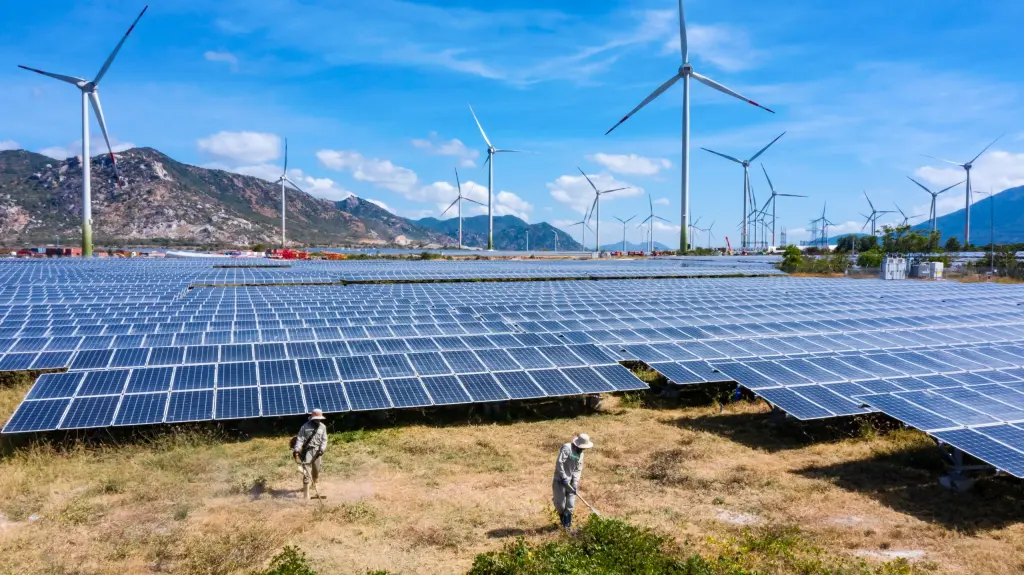Vietnam is embarking on a transformative journey toward a sustainable energy future. The nation's revised Power Development Plan VIII (PDP8) outlines ambitious goals to phase out coal by 2050 and significantly increase the share of renewable energy in its power mix. This strategic shift aims to meet the rising electricity demand, reduce greenhouse gas emissions, and position Vietnam as a leader in clean energy development.
Ambitious Goals for Renewable Energy Expansion
Under the revised PDP8, Vietnam plans to double its electricity generation capacity by 2030, compared to 2023 levels. The plan includes adding up to 73 GW of solar power and 38 GW of wind power capacity. By 2030, renewable energy is expected to account for a significant portion of the country's energy mix, with solar energy contributing 25.3%–31.1% and onshore and nearshore wind energy contributing 14.2%–16.1% .
This expansion reflects Vietnam's commitment to reducing its reliance on fossil fuels and embracing sustainable energy sources. The government aims to mobilize both domestic and international resources to support the development of the power sector, ensuring a stable and affordable electricity supply .
Phasing Out Coal and Embracing Clean Technologies
A central component of Vietnam's energy transition is the gradual phase-out of coal-fired power plants. The government plans to cease the construction of new coal plants, decommission outdated and inefficient facilities, and implement co-firing technology with clean fuels to reduce emissions from existing coal-fired plants .
Additionally, Vietnam is exploring the feasibility of co-firing biomass and ammonia, as well as piloting carbon capture systems at selected aging coal power plants. These initiatives aim to lower CO2 emissions and facilitate a smoother transition to cleaner energy sources.
Reintroducing Nuclear Energy and Exploring Hydrogen Production
In a significant policy shift, Vietnam is reintroducing nuclear energy into its power development plan. The country aims to build its first nuclear plants between 2030 and 2035, with a capacity of 6.4 GW, and an additional 8 GW by mid-century. This move is part of Vietnam's strategy to diversify its energy sources and ensure energy security.
Moreover, Vietnam plans to produce between 100,000 and 500,000 metric tons of hydrogen annually by 2030, escalating to 10–20 million tons by 2050. The focus is on green hydrogen produced through renewable energy-powered electrolysis, which will be used to replace natural gas and coal in power plants, as well as in transportation and industrial sectors.
Economic and Environmental Implications
Vietnam's renewable energy transition is expected to yield significant economic and environmental benefits. By investing in renewable energy infrastructure, the country aims to create job opportunities, attract foreign investment, and stimulate economic growth. The shift to clean energy sources will also contribute to improved air quality, reduced greenhouse gas emissions, and enhanced public health.
Furthermore, Vietnam's commitment to a just energy transition ensures that the move toward renewable energy is inclusive and equitable. The government is working to ensure that communities affected by the phase-out of coal are supported through retraining programs and economic diversification initiatives .Energy Tracker
Conclusion
Vietnam's revised energy policy marks a pivotal step toward a sustainable and resilient energy future. By phasing out coal, expanding renewable energy capacity, and embracing innovative technologies like nuclear energy and green hydrogen, Vietnam is demonstrating its commitment to environmental stewardship and economic development. As the country navigates this transition, continued collaboration between government, industry, and communities will be essential to achieving its ambitious energy goals.
Read More






 Thursday, 20-11-25
Thursday, 20-11-25







